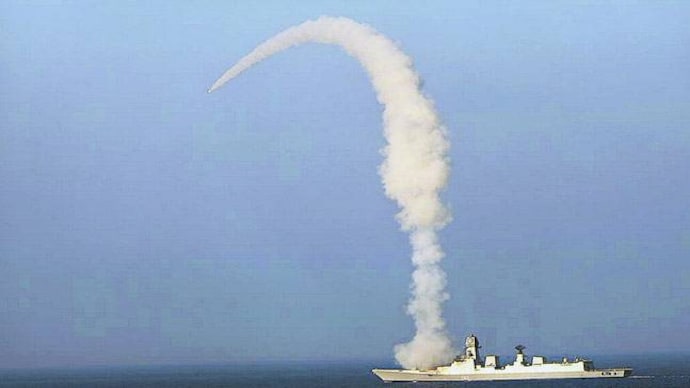Indian Navy test-fires land attack version of BrahMos missile: All you need to know
The supersonic missile with a range of 400km was fired from a warship off the Andaman and Nicobar islands.

The Indian Navy today moved towards acquiring a pin-point ability to attack targets on land with its first test of the land-attack variant of the BrahMos supersonic cruise missile. The missile has a range of 400km. The successive successful launch of the supersonic missile took place at sea off the Andaman and Nicobar islands. This is the first time a land-attack variant of the missile was fired from a warship and also the first sea-to-land missile test in the country.
HERE'S ALL YOU NEED TO KNOW:
1. The missile fired from ship squarely hit the specially created land target put up in one of the islands of Andaman and Nicobar.
2. According to officials of the Indo-Russian BrahMos corporation, the missile met all flight parameters during the test where it selected the designated target among the group of targets, hitting it precisely and destroying the target with its tremendous kinetic energy.
3. The Navy has already inducted anti-ship versions of the BrahMos on its warships including the Rajput and is integrating them into two other ships of the class.
4. The missiles will also equip the three 7000-ton Kolkata class destroyers currently under construction at the Mazagon Docks Ltd, Mumbai.
5. The Indian Navy began inducting the first version of BrahMos Missile System in all of its frontline warships from 2005. BrahMos can be launched in single or in a salvo from ship towards single or different types of targets within an interval of 2-2.5 seconds in various trajectories.
ALSO READ:
A view from the BrahMos missile factory
Agni 5 is India's most potent nuclear-capable missile ever, and here's why China is worried
Why the world is worried about this 'unstoppable' hypersonic Russian missile
